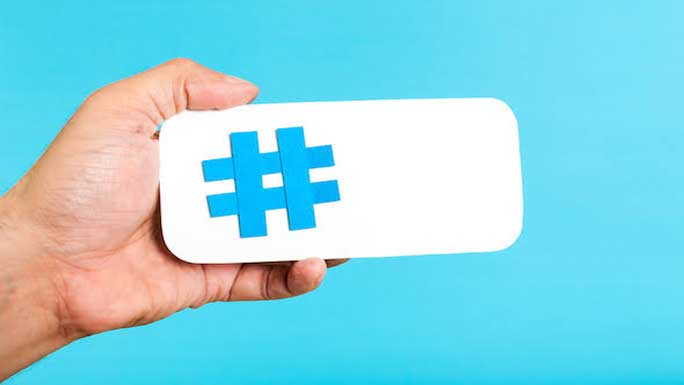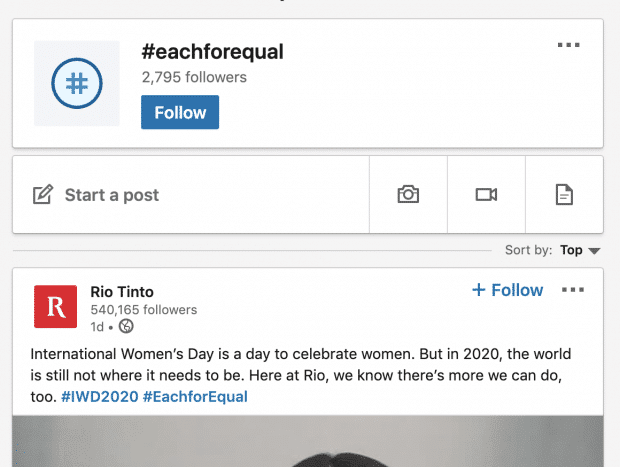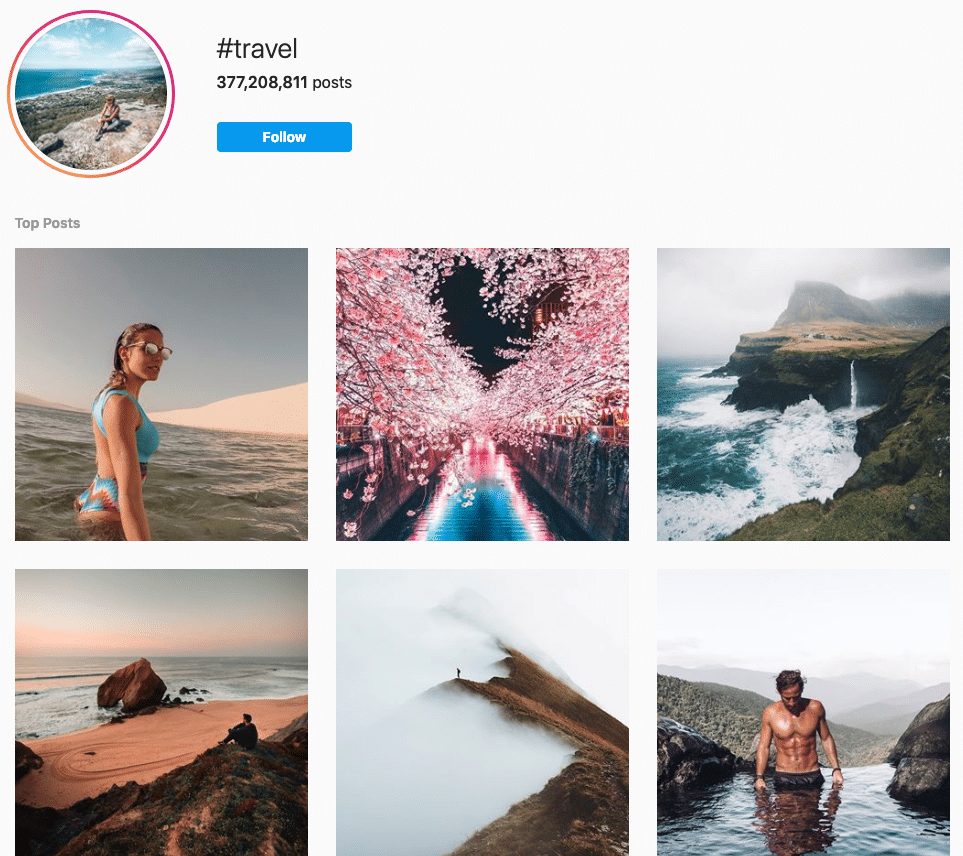Whichever social media platforms your brand uses as a part of its social media strategy, realizing how to use hashtags will assist increase your brand’s social media engagement.
However, in case you’re sticking with #ThrowbackThursday posts on Twitter, uncertain of how else to make use of hashtags, stay right here. Your brand can do much more.
This post breaks down the fundamentals of successfully utilizing hashtags on social media and why you need to use them.
You’ll additionally learn:
- easy methods to discover hashtags that will work greatest in your brand
- why utilizing solely widespread hashtags isn’t the proper strategy
- essential ideas for utilizing hashtags on each social media platform on the market
Let’s get began.
What’s a hashtag?
The pound image on your keyboard—additionally referred to as an octothorpe— was initially used to mark numbers.
They had been first used as hashtags in the summer of 2007 by Chris Messina. That’s when the web advertising specialist walked into Twitter’s workplaces with an idea. Due to the platform’s brevity, he recommended the corporate begin utilizing the pound image to group associated Tweets collectively.
This was the first-ever use of the hashtag:
Since then, the usage of hashtags, their reach, and their effectiveness has solely grown.
Consider hashtags as a method to connect social media content material to a selected subject, occasion, theme, or conversation. In addition, they make it simpler to find posts around these particular topics, as a result of hashtags mixture all social media content material with that same hashtag.
They’re not just for Twitter anymore, either. Hashtags are efficient on different social media platforms too. (Discover more particulars on how to use hashtags for every platform below.)
Hashtag basics
- They always begin with # however they won’t work in case you use areas, punctuation, or symbols.
- Be sure your accounts are public. In any other case, the hashtagged content material you write won’t be seen by any non-followers.
- Don’t string too many words together. One of the best hashtags is usually comparatively quick and straightforward to remember.
- Use relevant and specific hashtags. If it is too obscure, it will be arduous to seek out and it won’t likely be utilized by different social media customers.
- Limit the variety of hashtags you utilize. More isn’t always better. It actually appears spammy.
Why use hashtags?
Increased engagement with your followers
Including hashtags in your posts means taking part in a conversation occurring on that social media platform. And most significantly, it makes your posts seen in that conversation.
This could lead to greater engagement, boosting your brand’s social media engagement via likes, shares, comments, and new followers.
A chance to construct your brand
Creating a branded hashtag might be an efficient method to promote your business and drive conversation.
For instance, the Raptors’ branded hashtag #WetheNorth lit up in the course of the crew’s profitable 2019 season. It has common appeal and was one of the most-used hashtags by Canadians in the first half of 2019.
One other instance is Cheerios and its #CheeriosHeartHuntSweepstakes marketing campaign. This contest inspired followers to buy Cheerios merchandise and in addition, spread consciousness of the brand by posting photographs on social media.
A method to show assist for social issues
Utilizing a hashtag that’s linked to a difficulty past your brand is a method to mobilize behind a vital trigger or issue.
For instance, #EachforEqual and #IWD2020 had been used throughout social media platforms, together with LinkedIn, on Worldwide Girls’ Day.
Brands can also create a branded hashtag that additionally reveals its connection to a social issue.
For instance, the Canadian telecommunications firm Bell makes use of the branded hashtag #BellLetsTalk to advertise psychological well-being consciousness.
Add context to a social media post
On Twitter, you don’t have a ton of space to write down a caption. You’ve 280 characters, to be actual.
On Instagram, longer captions aren’t always the most effective. Identical with Facebook, Pinterest, LinkedIn or some other platform—generally less is more.
Utilizing a hashtag can be an easy method to contextualize what you’re speaking about, without utilizing up beneficial characters or writing repetitive captions.
For instance, NASA celebrated the 50th anniversary of the Apollo 11 moon landing in July 2019. Utilizing the #Apollo50th hashtag was a part of its digital marketing campaign. On World Emoji Day, which can also be in July, NASA posted one of the most popular tweets:
Hashtags contextualize this inventive Tweet, making it clear that NASA is celebrating each anniversary and taking part in the World Emoji Day conversation.
Assist your target market to discover you
On Instagram and LinkedIn, customers can follow hashtags in addition to different customers. Utilizing a number of widespread hashtags might be one other method to assist new customers to discover your brand.
For instance, for those who use #travel in your Instagram posts, someone who follows that hashtag will see your current post in their feed. You may gain some new followers this way.
The most popular hashtags
The most popular hashtags on the market aren’t essentially the best hashtags.
For instance, the hashtag #followme has greater than 515 million posts on Instagram. Hashtags that solicit likes don’t have interaction with your followers and don’t add any that means to your social media post.
In addition, they look actually spammy. And you don’t want that.
However don’t ignore widespread hashtags, either. For instance, #throwbackthursday or #flashbackfriday or other daily hashtags might be enjoyable methods in your brand to join a wider social media conversation.
As of March 2020, some of the hottest Instagram hashtags of all time include:
- #love (1.7B posts)
- #instagood (1.1B posts)
- #photooftheday (763M posts)
- #beautiful (639M posts)
- #happy (564M posts)
- #picoftheday (551M posts)
- #photography (537M posts)
- #nature (494M posts)
- #instagram (439M posts)
- #food (376M posts)
After all, widespread hashtags differ relying on what social media platform you’re utilizing. On LinkedIn, widespread hashtags include #leadership and #productiveness.
Whereas there are millions—even billions—of posts utilizing widespread hashtags, they’re comparatively common. They aren’t particular to an industry or a theme. And don’t say a lot about your brand.
So, use these widespread hashtags sparingly.



